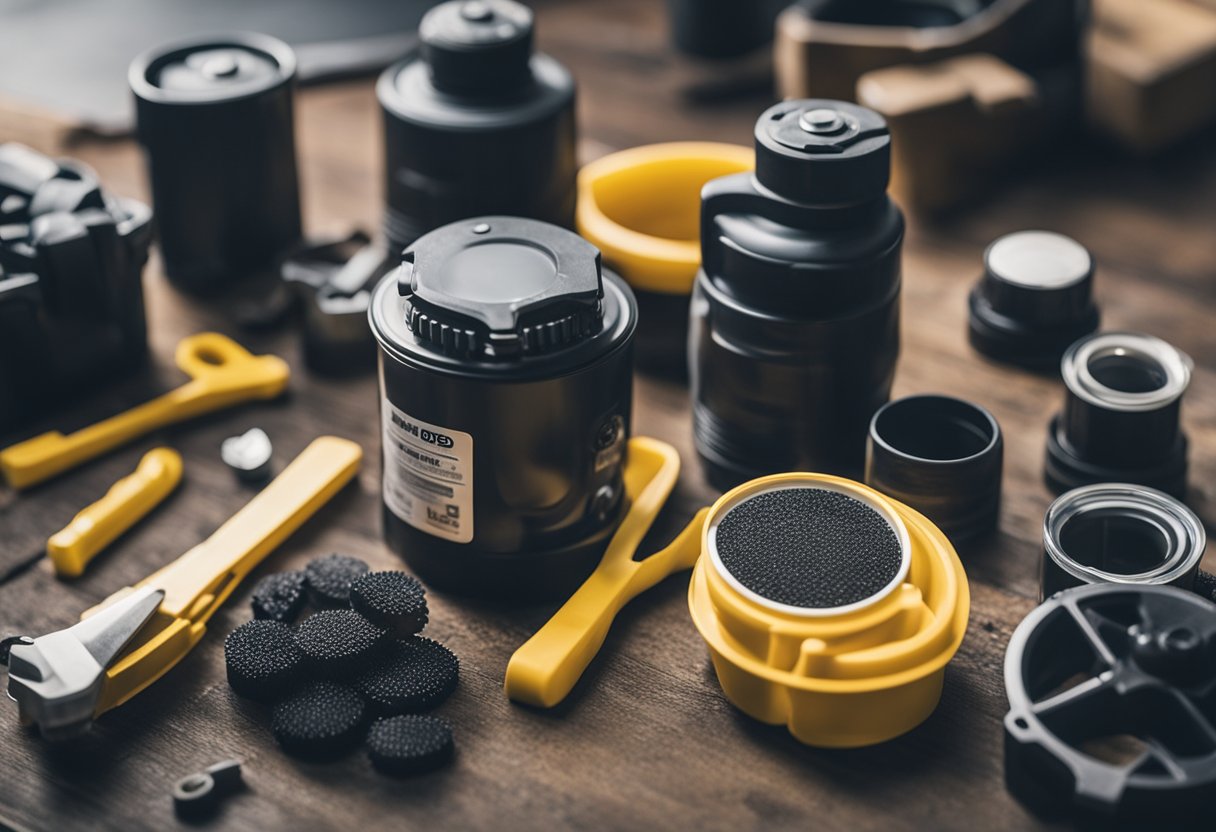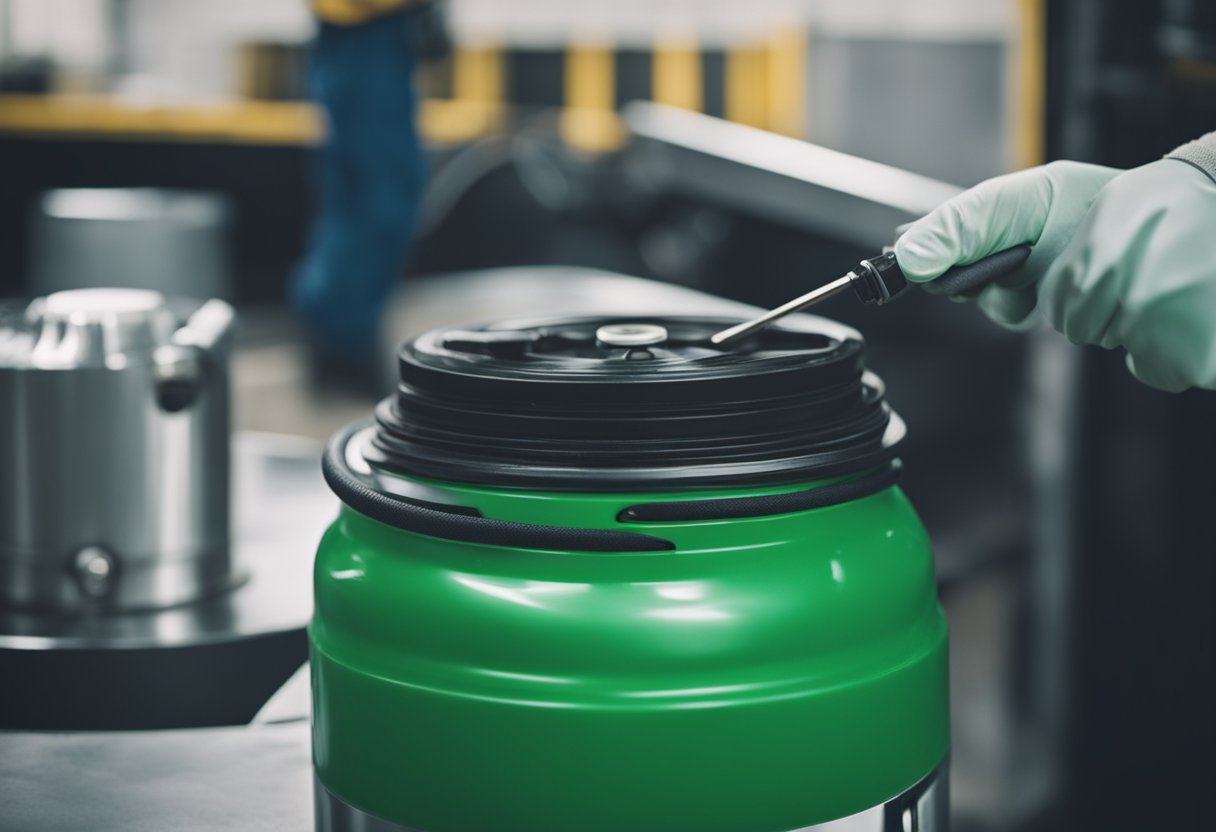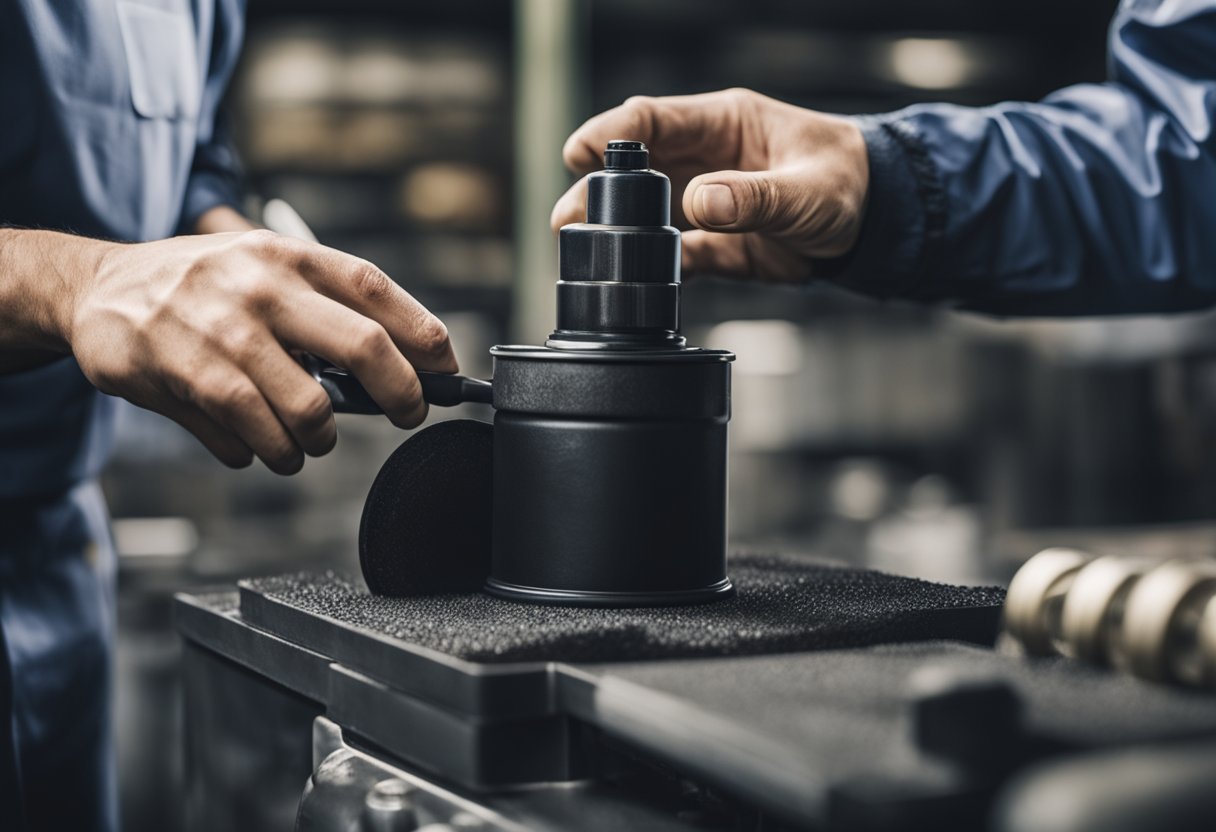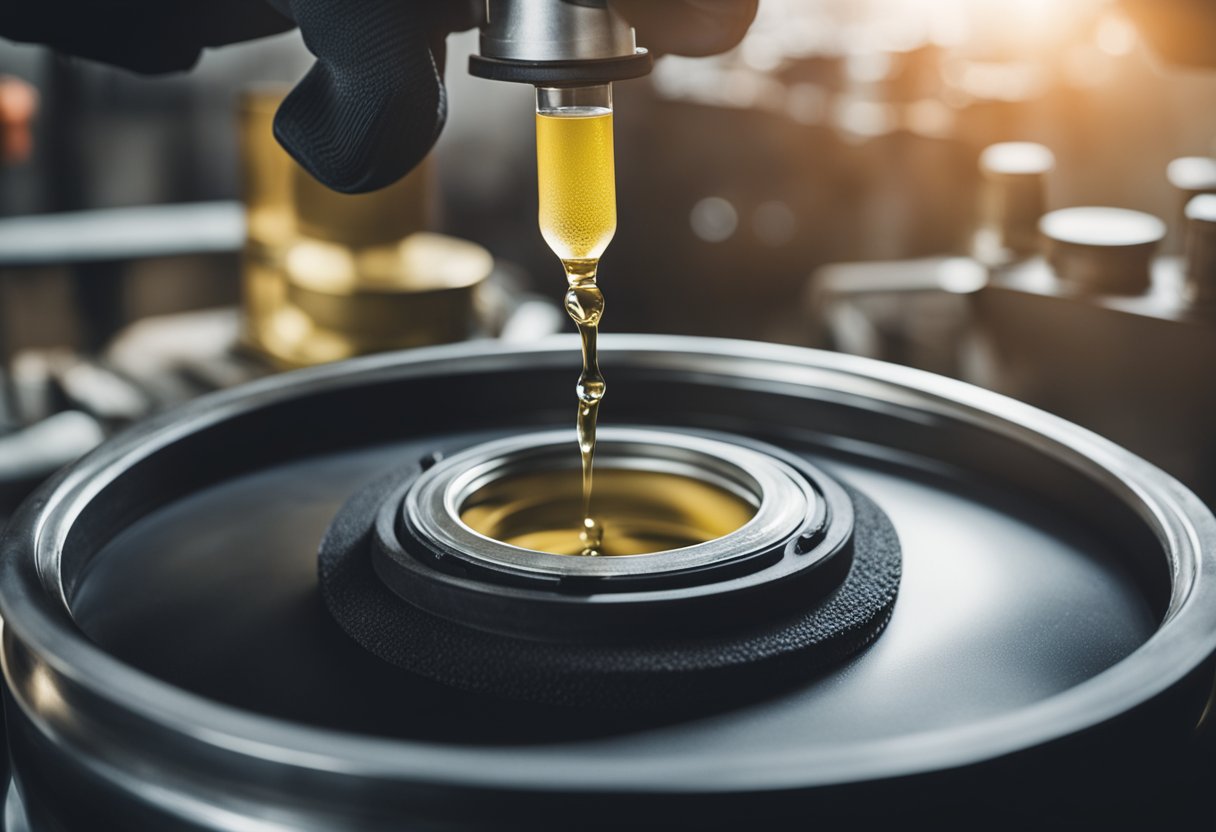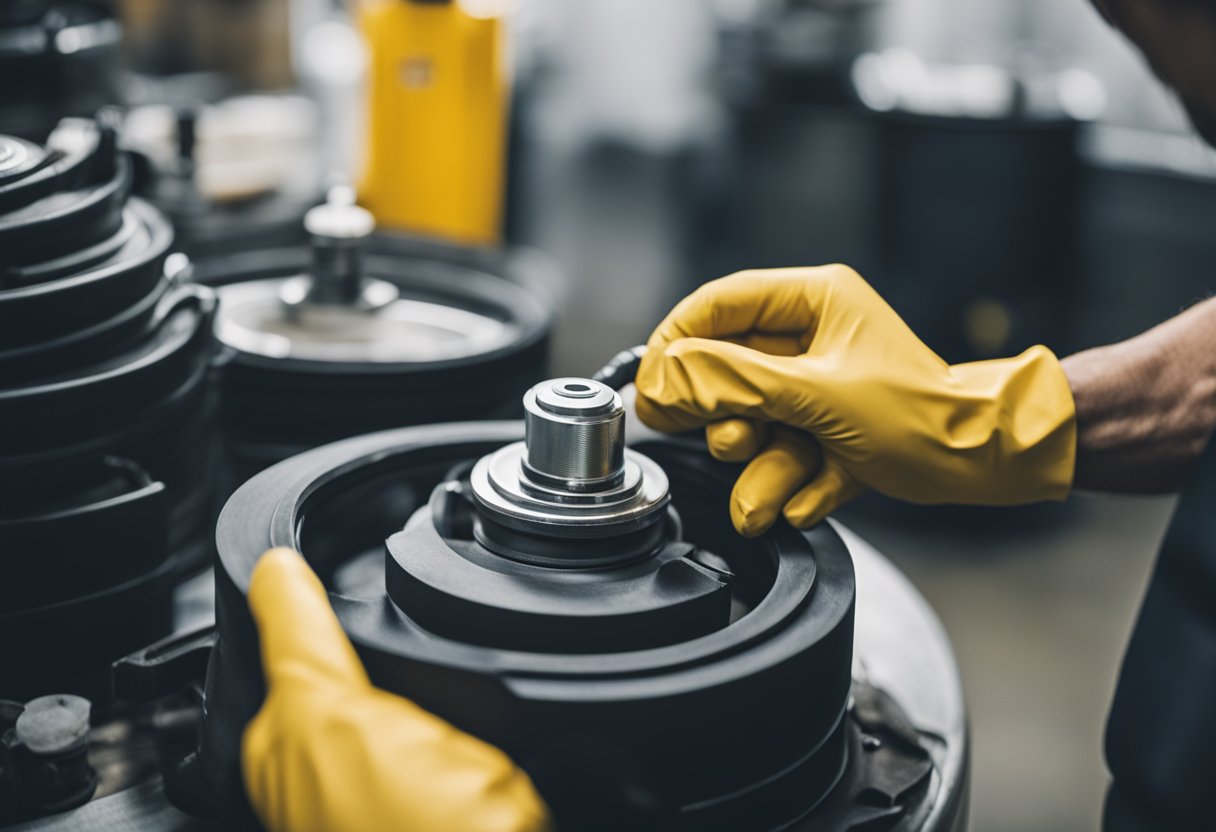I have been restoring old cars for years, and one of the most common problems I have encountered is deteriorating rubber. Rubber parts, such as seals, gaskets, and hoses, can dry out and crack over time, making them ineffective and prone to leaks. Fortunately, I have found a solution that can restore rubber to its original condition: brake fluid.
Understanding Rubber and Brake Fluid
Rubber is a versatile material that is used in a wide range of applications, from automotive components to household items. It is durable, flexible, and resistant to heat, chemicals, and abrasion. However, rubber can deteriorate over time due to exposure to UV radiation, ozone, and other environmental factors. When rubber dries out, it becomes hard, brittle, and prone to cracking. This can lead to leaks, reduced performance, and even safety hazards.
Restoring Rubber with Brake Fluid
One of the most effective ways to restore rubber is to use brake fluid. Brake fluid is a type of hydraulic fluid that is used in the braking system of vehicles. It is designed to withstand high temperatures and pressure, and it has excellent lubricating properties. When applied to deteriorating rubber, brake fluid can penetrate the surface and restore the elasticity of the material. This can help to prevent leaks and improve the performance of the rubber component.
Key Takeaways
- Rubber can deteriorate over time due to exposure to environmental factors.
- Brake fluid can be an effective solution for restoring deteriorating rubber.
- Regular maintenance and preventive measures can help to prolong the life of rubber components.
Understanding Rubber and Brake Fluid
https://www.youtube.com/watch?v=EnGsllKvheQ&embed=true
Rubber is a versatile material that is used in a wide range of applications due to its unique properties. It is flexible, durable, and resistant to heat, water, and chemicals. However, over time, rubber can become brittle and hard, losing its elasticity and flexibility. This is due to the loss of plasticizers – the chemicals that make rubber soft and pliable.
Brake fluid, on the other hand, is a hydraulic fluid that is used in the braking system of a vehicle. It is designed to transfer force from the brake pedal to the brake calipers or drums, which then apply pressure to the brake pads or shoes to slow down or stop the vehicle. Brake fluid is typically made from glycol ethers or silicone, which are both compatible with rubber.
When brake fluid comes into contact with rubber, it can cause the rubber to swell and soften, which can be beneficial in some cases. For example, if a rubber seal or gasket has become hard and brittle, soaking it in brake fluid can help to restore its elasticity and flexibility. However, it is important to note that not all types of rubber are compatible with brake fluid, and some types of rubber can be damaged by prolonged exposure to brake fluid.
In general, it is best to use brake fluid to restore rubber only when other methods have failed. It is also important to follow proper safety precautions when working with brake fluid, as it can be toxic and flammable. Before using brake fluid to restore rubber, it is recommended to test a small, inconspicuous area first to ensure that it does not cause any damage.
Overall, understanding the properties of rubber and brake fluid is important when it comes to restoring rubber with brake fluid. By following proper safety precautions and testing methods, it is possible to restore rubber to its original elasticity and flexibility using brake fluid.
The Deterioration Process
Rubber is a versatile material that is used in many products due to its durability and flexibility. However, over time, rubber can deteriorate and become brittle, leading to cracking and other issues. As a result, it is important to understand the deterioration process of rubber and how to prevent it.
One of the main causes of rubber deterioration is aging. As rubber ages, it can become brittle and prone to cracking. This is due to the breakdown of the rubber molecules over time. Exposure to sunlight, heat, and oxygen can accelerate the aging process, causing rubber to deteriorate more quickly.
Another cause of rubber deterioration is wear and tear. Rubber products that are subjected to frequent use or heavy loads can become worn out over time. This can lead to cracking or other forms of damage. In addition, exposure to chemicals, such as oils and solvents, can also cause rubber to deteriorate.
To prevent rubber from deteriorating, it is important to store it properly. Rubber products should be kept in a cool, dry place away from direct sunlight and heat. In addition, rubber should be protected from exposure to chemicals and other harmful substances.
Overall, understanding the deterioration process of rubber is important for maintaining the longevity of rubber products. By taking steps to prevent deterioration, such as proper storage and protection from harmful substances, rubber products can remain durable and flexible for many years.
Restoring Rubber with Brake Fluid
https://www.youtube.com/watch?v=ztrnIRPX1t4&embed=true
When rubber ages, it becomes harder and brittle as the plasticizers that allow it to remain soft dries up. This can lead to cracks, leaks, and other issues. Fortunately, there are ways to restore old rubber parts using brake fluid.
I have personally tested the effectiveness of brake fluid on old rubber seals and found that it works well. Brake fluid has the ability to swell rubber seals, which can help restore their original shape and size. It also helps to soften the rubber, making it more flexible and less prone to cracking.
To restore rubber with brake fluid, you will need to follow these steps:
- Clean the rubber part thoroughly to remove any dirt or debris.
- Apply a generous amount of brake fluid to the rubber part, making sure to cover it completely.
- Let the brake fluid sit on the rubber for at least 24 hours.
- Wipe off any excess brake fluid with a clean cloth.
- Test the rubber part to see if it has been restored. If it is still hard and brittle, repeat the process.
It is important to note that not all rubber parts can be restored with brake fluid. Some rubber parts may be too far gone and will need to be replaced. Additionally, brake fluid can be corrosive to some types of rubber, so it is important to test a small area before applying it to the entire part.
In summary, restoring rubber with brake fluid is a cost-effective way to extend the life of old rubber parts. By following the steps outlined above, you can restore old rubber seals and other parts to their original condition, saving you time and money in the long run.
Alternatives to Brake Fluid
Although brake fluid is an effective solution to restore rubber, it is not the only option available. Depending on the situation, one may consider using alternatives such as silicone, silicone spray, alcohol, wintergreen oil, transmission fluid, or rubber preservative.
Silicone is a popular alternative to brake fluid when restoring rubber because it is non-reactive, waterproof, and heat resistant. It is commonly used to lubricate and protect rubber parts, such as O-rings and gaskets. Silicone spray is another option that can be used to restore rubber. It is easy to apply and provides a protective coating that helps prevent cracking and drying out.
Alcohol is another alternative that can be used to restore rubber. It is an effective solvent that can remove dirt, grime, and other contaminants from rubber surfaces. However, it is important to note that alcohol can also dry out rubber, so it should be used sparingly.
Wintergreen oil is a natural alternative that can be used to restore rubber. It contains methyl salicylate, which helps soften and condition rubber. It is also a popular ingredient in many rubber restoration products.
Transmission fluid is another option that can be used to restore rubber. It contains detergents and other additives that can help clean and condition rubber. However, it is important to note that transmission fluid can also be harmful to some types of rubber, so it should be used with caution.
Rubber preservative is a specialized product that is designed specifically to restore and protect rubber. It contains a blend of oils, waxes, and other ingredients that help condition and protect rubber surfaces. It is a good option for restoring old or damaged rubber, as well as for protecting new rubber from premature aging and cracking.
Overall, there are several alternatives to brake fluid that can be used to restore rubber. Each option has its own advantages and disadvantages, so it is important to choose the right one for the situation at hand.
The Impact of Temperature on Restoration
https://www.youtube.com/watch?v=HfcEPso4YoY&embed=true
When restoring rubber with brake fluid, it’s important to consider the impact of temperature. Temperature can affect the restoration process in a number of ways, including the speed of the restoration and the quality of the final product.
One factor to consider is the temperature at which the brake fluid is applied. Applying brake fluid at high temperatures can speed up the restoration process, but it can also cause the rubber to become brittle and prone to cracking. On the other hand, applying brake fluid at low temperatures can slow down the restoration process, but it can also help to preserve the rubber’s flexibility and durability.
Another factor to consider is the temperature at which the restored rubber is stored. Storing the rubber at high temperatures can cause it to become soft and pliable, which can be beneficial in some cases. However, storing the rubber at high temperatures for extended periods of time can cause it to break down and lose its elasticity.
In some cases, it may be necessary to use a heat gun to help restore the rubber. However, it’s important to use the heat gun carefully and avoid overheating the rubber. Overheating can cause the rubber to melt or become damaged, which can make it difficult or impossible to restore.
Overall, temperature plays an important role in the restoration of rubber with brake fluid. By carefully considering the impact of temperature and using the appropriate techniques, it’s possible to achieve high-quality results that are both durable and flexible.
Replacement vs Restoration
When it comes to rubber parts that have worn out, there are two options: replacement or restoration. The decision between the two depends on a few factors such as the cost of the replacement part, availability, and the condition of the rubber.
Replacing a worn-out rubber part with a new one is the most straightforward solution. However, it can be expensive, especially if the rubber part is a rare or hard-to-find item. Additionally, it might require a professional mechanic to swap out the part, which can add to the cost.
On the other hand, restoring rubber parts with brake fluid can be a cost-effective solution. Brake fluid can help restore the rubber’s elasticity and flexibility, making it more pliable and less brittle. This method can be especially useful for rubber parts that are no longer in production or are difficult to find.
However, it is important to note that not all rubber parts can be restored with brake fluid. Some rubber parts may be too damaged or worn out to be restored, and in those cases, replacement may be the only option.
In my experience, I have found that restoring rubber parts with brake fluid can be a viable option for certain situations. It is important to follow the proper steps and precautions when using brake fluid to restore rubber, as it can be a hazardous substance if not handled correctly.
Overall, the decision between replacement and restoration depends on the specific situation and the condition of the rubber part. It is important to weigh the costs and benefits of each option before making a decision.
Preventive Measures and Maintenance
As with any part of a vehicle, preventive measures and regular maintenance are key to ensuring the longevity and optimal performance of rubber components. Here are a few tips to keep in mind:
Lubrication
Rubber components such as suspension bushings can benefit from lubrication to reduce friction and wear. However, it’s important to choose a lubricant that is compatible with rubber and won’t cause damage over time. While some may suggest using brake fluid as a lubricant, it’s important to note that this is not its intended use and could lead to negative consequences. Instead, opt for a lubricant specifically designed for rubber components.
Suspension Bushings
Suspension bushings are crucial components that help to absorb shock and provide stability while driving. Over time, they can wear down or become damaged, leading to a decrease in performance and safety. Regular inspections and replacement of worn bushings can help to maintain grip and handling.
Brake Fluid
While brake fluid can be used to restore some rubber components, it’s important to note that it can also cause damage if not used properly. For example, using brake fluid to lubricate rubber bushings can lead to washout and lack of lubricity, ultimately causing more harm than good. Stick to using brake fluid only for its intended purpose in the braking system.
DOT 4
When it comes to brake fluid, it’s important to choose the right type for your vehicle. DOT 4 brake fluid is a common option that offers high performance and a higher boiling point than DOT 3. However, it’s important to note that DOT 4 is not compatible with all types of rubber. Be sure to check with your vehicle manufacturer to ensure compatibility before using DOT 4 brake fluid in your braking system.
By following these preventive measures and performing regular maintenance, you can help to ensure the optimal performance and longevity of rubber components in your vehicle.
Conclusion
In conclusion, restoring rubber with brake fluid is a viable option for those looking to extend the life of their rubber products. While there are other alternatives available, such as using Gummi Pflege Stift, brake fluid has proven to be effective in restoring rubber to its original state.
It is important to note that not all rubber products can be restored with brake fluid. It is best to test a small, inconspicuous area first before applying brake fluid to the entire surface. Additionally, it is important to wear gloves and work in a well-ventilated area when using brake fluid.
Overall, restoring rubber with brake fluid is a cost-effective and efficient way to extend the life of rubber products. It is a simple process that can be done at home with minimal tools and supplies. By following the proper precautions and techniques, anyone can restore their rubber products to their original state.
Frequently Asked Questions
How can I restore rubber seals around car windows?
To restore rubber seals around car windows, you can use brake fluid. Apply a small amount of brake fluid to a clean cloth and rub it on the rubber seals. Let it sit for a few minutes before wiping off the excess with a clean cloth. This will help soften and restore the rubber seals, making them more pliable and less likely to crack or leak.
What is the best way to soften old rubber seals?
The best way to soften old rubber seals is to use brake fluid. Apply a small amount of brake fluid to a clean cloth and rub it on the rubber seals. Let it sit for a few minutes before wiping off the excess with a clean cloth. This will help soften and restore the rubber seals, making them more pliable and less likely to crack or leak.
What are some alternatives to brake fluid for restoring rubber?
While brake fluid is an effective way to restore rubber, there are other alternatives that can be used as well. Some people have had success using wintergreen oil or glycerin to soften and restore rubber. However, it is important to note that these alternatives may not be as effective as brake fluid and may take longer to achieve the desired results.
Does wintergreen oil work to soften rubber?
Wintergreen oil has been known to work to soften rubber, but it may not be as effective as brake fluid. To use wintergreen oil, apply a small amount to a clean cloth and rub it on the rubber seal. Let it sit for a few minutes before wiping off the excess with a clean cloth.
Can glycerin be used to soften rubber?
Glycerin can be used to soften and restore rubber, but it may not be as effective as brake fluid. To use glycerin, apply a small amount to a clean cloth and rub it on the rubber seal. Let it sit for a few minutes before wiping off the excess with a clean cloth.
What is the best rubber restorer on the market?
There are many rubber restorers on the market, but it is important to choose one that is specifically designed for the type of rubber you are restoring. Some popular rubber restorers include Meguiar’s Ultimate Black, 303 Aerospace Protectant, and Griot’s Garage Rubber Cleaner. It is important to read the instructions carefully and follow them closely for best results.

Hi, I’m Sal Muller of Tooltrip.com. My DIY experience led me to understand essential power tools for home projects. Tooltrip.com guides enthusiasts and professionals in choosing right tools for any job. I provide concise top tool reviews for easier, efficient DIY.



